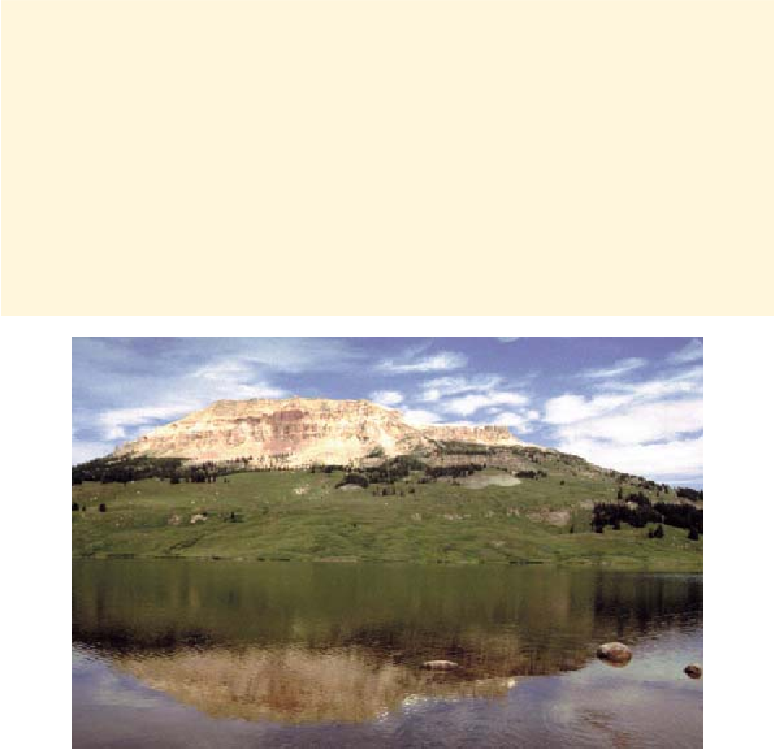Travel Reference
In-Depth Information
ancient granites and gneisses, some of which are at least 3.3 billion years old, and none
of which are younger than 2.7 billion years old. When the uplift started about 50 million
years ago, these ancient rocks were buried under about 12,000 feet (3,660 m) of younger
sedimentary rocks. These younger rocks have largely been eroded away but remain in a
few areas, such as Beartooth Butte.
The strata in the cliff face across Beartooth Lake include a lens-shaped reddish brown
layer that is about a third of the way down from the top. The bright colored sediments were
deposited in the brackish waters of a stream where it entered the ocean. Many fish fossils
have been found in these sediments. These were among the earliest fish on earth about 400
million years ago. Today, those fish are about 10,000 feet (3,050 m) above sea level, thanks
to the ride they got during the Beartooth Plateau uplift.
Beartooth Butte is reflected in Beartooth Lake.
A little over a mile (0.8 km) west of Beartooth Lake, a gravel road goes north to reach the
Clay Butte Forest Service lookout tower in about 2.5 miles (4 km). In July and August, visitors
are welcome to enjoy the view and the panorama of mountain photographs on display in the
small building at the top. Clay Butte is another remnant of sedimentary rocks similar to Bear-
tooth Butte, but the fish fossil strata have been eroded away.

